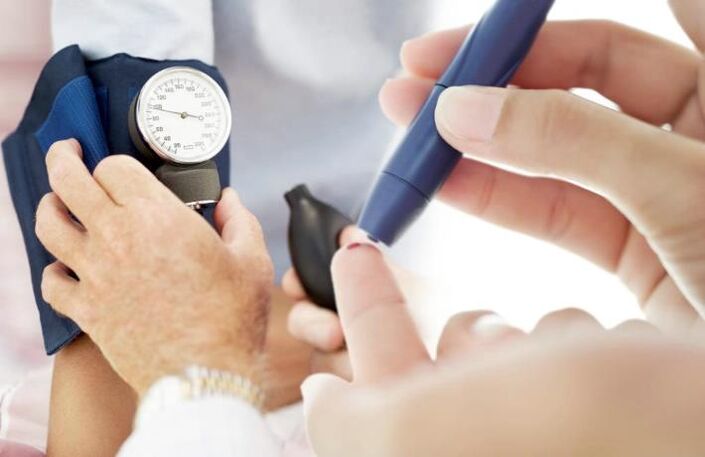There are several types and types of diabetes, each with its own unique characteristics and differences.
Along with the well-known names of different types of diabetes - types 1 and 2 - you can often find other types of the disease that are often confusing. For example, it's not entirely clear what gestational diabetes in pregnancy or lada diabetes is. So what are the other types and forms of diabetes?
Main types
Usually, in the diagnostic formula one can find the terms "type 1 diabetes" or "type 2 diabetes". It is this classification that determines the disease according to the body's insulin requirements.

Type 1 diabetes is characterized by the destruction of specialized pancreatic beta cells responsible for insulin production. This happens most often when a person is exposed to a viral infection, as a result of which the immune system begins to create "invaders" of the gland cells, which destroy them. As a result, insulin deficiency occurs in the blood. Since cells cannot absorb glucose from the blood without an important hormone like insulin, they literally starve, while "floating" with the glucose.
If insulin is introduced into the body from the outside, then "happy" cells will start consuming glucose, while sugar levels will normalize. Therefore, type 1 disease is also known as insulin-dependent diabetes mellitus.
When the term "non-insulin dependent diabetes mellitus" is mentioned, it means type 2 diabetes. Its pathogenesis is based on two main points:
- pathology of beta cells;
- violation of the insulin sensitivity of the body's insulin-dependent cells.
This condition develops more often in obese people, because obesity leads to the formation of cells that are resistant (immune) to the action of insulin. In addition to obesity, glucose absorption is affected by smoking, lack of physical activity, and taking certain medications.
Type 3 diabetes
Have type 3 diabetes, which combines signs from types 1 and 2. Specifically, the accumulation of fatty tissue in the liver (as in type 2 diabetes) and insulin deficiency (as in type diabetes). first). In life, type 2 diabetes that responds positively to insulin therapy is type 3. But this type is not recognized by the medical organization so all cases are divided into type 1 and type 2.
This disease is not uncommon. The cause is considered to be an increase in the absorption of iodine in the intestine due to its various pathologies. This leads to thyrotoxic type 2 diabetes with a complex pathogenesis. Treatment with it must be fundamentally different from standard therapy.
hidden form
Latent diabetes is a condition in which glucose from food is slowly absorbed, but insulin production remains adequate or elevated. Clinically latent diabetes is not present. This form precedes type 2 diabetes. It should be said that the hidden variant of diabetes is prediabetes, which at this stage can still affect the state of carbohydrate metabolism.
Latent diabetes can persist for a long time (up to several years). For timely recognition, you should regularly monitor your blood sugar, this is especially important for people with predisposing factors (obesity, hypertension and the use of diuretics that lower potassium levels, syndromes, etc. )polycystic ovary syndrome).

If latent diabetes is detected in time, following simple prevention rules, it will never turn into type 2 diabetes. To prevent this, you should increase your activity. physical fitness, diet adherence, blood sugar control.
Not durable and stable
You might also find such a word as "stable and unstable diabetes. " So they talk about both type 1 and type 2 diabetes. Under these terms, understand the clinical course. disease readiness.
Non-progressive diabetes is characterized by a rather severe and unpredictable course. Significant changes in blood sugar levels during the day, which do not allow you to choose the optimal dose of insulin. With this form, acute and late complications occur more often - ketoacidosis, disorders of the kidneys, organs of vision. The unstable form is characteristic of adolescence.
The stable form is characterized by a uniform course without a sudden drop in blood sugar, milder symptoms and a low degree of hyperglycemia.
Pregnancy
Gestational diabetes is a form of diabetes that develops during pregnancy. Gesture, or by latitude. pregnancy is pregnancy. The cause of this type of disease has not been reliably determined, but the hormones produced by the placenta and the body of the expectant mother lead to physiological insulin resistance. There are several factors that lead to the development of gestational diabetes. Including:
- late pregnancy;
- familial diabetes;
- smoke;
- fat;
- stillbirth in previous pregnancies.
If a woman follows the doctor's instructions and regularly undergoes tests, such an unpleasant illness can be avoided. If diabetes has developed, then adequate insulin therapy and hospitalization are indicated. Patients are monitored by obstetricians and gynecologists, endocrinologists, internists, ophthalmologists, neurologists. After childbirth, as a rule, carbohydrate metabolism returns to normal.

It is important to note that gestational diabetes can persist after childbirth. This diagnosis is valid for 2 months postpartum. During this period, the woman needs to continue treatment, but with an adjustment of the insulin dose, as calculated by the attending physician or endocrinologist. 2 months after childbirth, a woman undergoes a stress test, which will indicate whether there is a violation of carbohydrate metabolism. If hyperglycemia is noted, the diagnosis is corrected and appropriate treatment is indicated.
Diabetes Lada
Latent diabetes, or lada diabetes, is rarely diagnosed because of its latent course. Lada diabetes has features associated with other forms.
- Lab tests do not reveal this form. Fasting blood sugar levels do not usually go high.
- The first symptoms of the disease appear after 25 years.
- Pregnancy, stress, infectious disease, rapid weight gain due to adipose tissue can cause clinical signs.
- Lada diabetes most commonly occurs in people who are not obese.
- The symptoms are similar to those of type 2 diabetes, but in a more subtle form.
- Signs of type 1 diabetes can be detected in a patient's blood.
- Lada diabetes is controlled with diet and taking blood sugar-lowering medications.
To identify lada diabetes, specific tests are performed, which will be discussed in an article dedicated to this condition.
Diabetes
Diabetes is rarely recognized, it is associated with mutations of certain genes (there are 8 of them). These genes are responsible for the normal structure of insulin or for the optimal development of beta cells. Diabetes mellitus is characterized by low progression, which develops in young people (usually children, adolescents).
Among all patients with diabetes, mody diabetes accounts for 2-5% of cases, but the development of the fetal type is precisely associated with the gene mutation. The modality of diabetes can only be reliably diagnosed with the help of molecular genetic studies.

Features of this form line:
- occurs in children
- sometimes there is an increase in glucose up to 8 mmol / l;
- not obese;
- no insulin resistance;
- SD is available in two generations;
- The process is similar to that in type 2 diabetes.
steroid diabetes
Steroid-induced diabetes develops with prolonged use of corticosteroid-based drugs or with hypercapnia (itsenko-Cushing syndrome or disease). Adrenal hormones have a detrimental effect on the beta cells of the pancreas, leading to insulin deficiency.
Steroidal diabetes mellitus is an insulin-dependent condition. But its clinical course includes some features of type 1 and type 2 diabetes. In addition, there is a violation of the work of other organs due to the action of corticosteroids. This diabetes is considered type 2 diabetes.
Pancreas
Pancreatic DM is a secondary disease. It develops as a response to pancreatic destruction in pancreatitis, stones in the gallbladder and ducts, after gland surgery. All these factors lead to decreased functioning beta cells and insulin deficiency. It progresses like type 1 diabetes.
Other secondary forms
Adrenal, pituitary, thyroid diabetes occurs against the background of an excessively high amount of certain hormones in the blood, which leads to destruction of insulin-producing cells. The clinic is similar to type 1 diabetes with symptoms of damage to other organs and tissues.



























